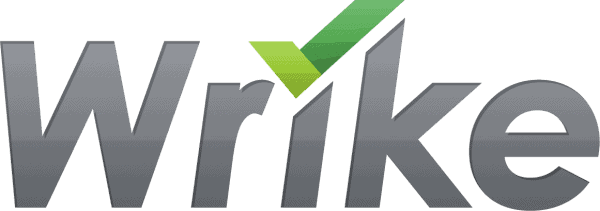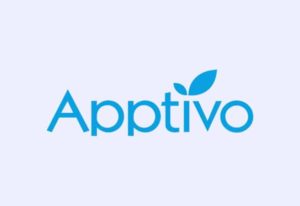- Project Management
- Workflow Management
- Team Collaboration
- Automation Features
- Time Tracking
- Reports
1) Project Management
Like most project management apps, Wrike, also allows admins to populate their new or ongoing projects with tasks. Each task has attributes such as a description, start date, due date, task stream, and a comments section. Once a task is created, project managers can assign it to a team member, attach files, add dependencies to it, and share it with others. Furthermore, Wrike allows users to add subtasks or checklists to a task in case they want to divide it into smaller actionable items. Each subtask can then be assigned to individual team members.
Another one of the standout project management features is Wrike’s folder system. The system serves as an excellent way for users to club relevant information together in one place and organize their projects even further. For example, users can group all the completed and ongoing projects for a recurring client into one folder. It is also a great way for users to manage work that is not project related, such as a weekly company blog. Within each folder, users can create a hierarchy of sub-folders and add tasks to each one.
2) Workflow Management
With the software’s workflow feature, project managers get an overview of overall and individual progress. They can mark each task or subtask as active or complete. This feature allows users to identify bottlenecks to project completion and a clear picture of activities in need of additional resource allocation.
Wrike offers users four ways to view their ongoing tasks; a list view, a board view, a table view, or a Gantt chart view. The list view allows users to prioritize tasks in tabular fashion. The board view is like a Kanban board where users can move their tasks around. Business and Enterprise plan users can additionally customize the board view’s column headers for more facile distinction. With the table view, users get an overview of resources allocated and time taken for each task.
The software’s Gantt chart view is straightforward, allowing users to map out all the steps needed to complete a project with easy drag-and-drop functionality. It gives users a timeline view of the state of their project, dependencies, and work scope.
3) Team Collaboration
Wrike’s activity stream feature is the software’s communication tool. Each task, folder, and project has an activity stream associated with it. Here, team members can communicate with each other by commenting on specific tasks or using the @mentions feature to draw someone’s attention. They can also monitor each other’s progress and update a task’s status. Wrike also allows managers to review their team’s activities in chronological order. Helpfully, the activity streams have filters along with options to unfollow that can weed out any unnecessary conversations.
The software has an inbox feature that lets users start or track an email thread from within the software. Besides this, users receive an inbox notification every time they are assigned to a new task, @mentioned, or when the status of a task they are working on is changed. Wrike also allows users to share files using its task file-sharing system, which supports DOC, DOCX, PPT, PPTX, and XLS file formats.
While it boasts of useful collaboration tools, Wrike has one noticeable non-inclusion, the lack of a private chat and video conferencing tool. Because of this, users need to pay for and integrate with a third-party chat app such as Slack. For a software that bills itself as a social tool, this is a big miss.
4) Automation Features
For companies that have repeat customers or similar projects, Wrike offers two automation features that speed up productivity. First, the software allows users to set up a project template. This process entails optimizing all the steps, including assigning tasks and subtasks, setting the order and duration of each task, and attaching any generic instructions and files to it. Once a user designs a template, the software stores it in a separate template folder ready to be used for a similar project whenever that is.
Second, Wrike’s Dynamic Request Forms feature helps users capture a customer’s requirements even before a project begins. The forms have a series of customizable fields that can gather all the necessary data from a client. The software then saves all the collected data directly to custom fields within a project template, eliminating the need for manual reentry into a project workflow. Additionally, the intuitive software automatically notifies and assigns tasks to team members based on data collected, such as location, specific requirements, or project types.
5) Time Tracking
With Wrike, time tracking is built into every task. Users simply need to click the play button within each task to record the time and track how long it takes to complete. The software then stores this information to create individual time logs and workload reports that can help users calculate the time needed to complete future projects. Helpfully, the software allows users to retroactively add hours or minutes to the tracker in case they cannot log time while working.
Other than using them to generate reports and estimating the time taken for future tasks, however, the time tracking features have limited functionality. The software does not differentiate between billable and non-billable hours. Moreover, since Wrike does not have a billing tool, managers cannot use the timesheets to create invoices and must export it to a third-party app that does that instead.
6) Reports
This project management app boasts of a robust reporting tool. There are two ways that this feature works. First, the software provides users with seven report templates. These templates, which are only available on the business and enterprise accounts, can be used to visualize key project metrics. These are:
- Active tasks by assignee
- Overdue tasks by assignee
- Weekly project status
- Unassigned tasks
- Timesheet report
- Projects due this month
- Team utilization report
Alternatively, users can generate custom reports of their own on any aspect of a project or task. Apart from the usual filters such as start and finish date, Wrike offers users several others that enable them to analyze their projects on a granular level. These include actual hours, allocated hours, task budgets, and overall project budgets.
The software has two report views – a column chart view that depicts results in the form of bar graphs, and a table view. Users can modify report outputs by dynamically hiding segments or rearranging the columns by dragging and dropping them. Once a report is generated, they can instantly share them with team members and stakeholders or export them in XLS format. Importantly, Wrike has the added functionality of scheduling and setting up recurring reports.




